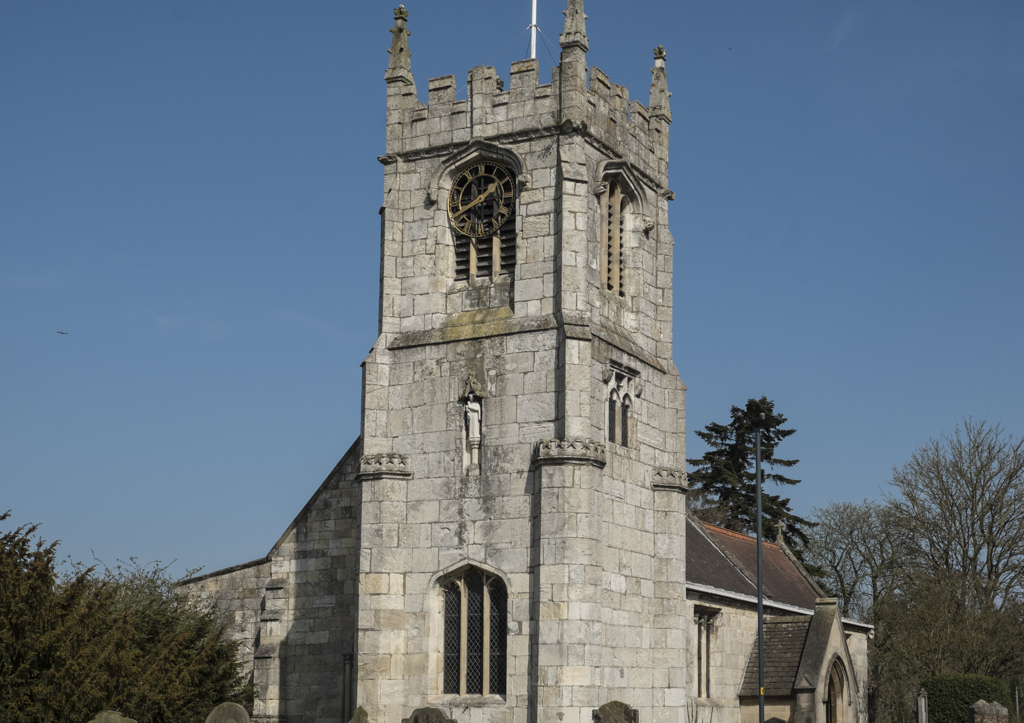Inside Cawood Church

The ALTAR was lifted from the floor of the Vestry in 1930 and restored by the Rev. S. F. Sykes. It is a stone slab with five crosses for the wounds of Christ. It is thought to have been hidden in the floor to prevent its destruction by Cromwellian troops in 1646.
The BELLS: The Tenor bell has no date but is pre-reformation. It bears the legend “Sanctiararee ora nobis”. Tradition has it that it was brought from the Castle chapel when the latter was destroyed in 1646. It is the bell remaining after the 1569 Rising of the North. Then an order stated that wherever the followers of the Earls of Northumberland and Westmorland had been countenanced all parish bells should be destroyed but one. It could have been one of the spoils of Edward I, brought from Scotland and presented to Cawood as a memento of the long stay here by his wife and court. The Castle chapel was dedicated to St. Andrew reflecting the fact that Scottish affairs were ruled from Cawood at the time it was built and the bell is similarly dedicated. The first bell is inscribed “Gloria in altissimis Deo· 1674. The third bell reads “Gloria Deo Pax hominibus· 1674.

The ARCHBISHOP MOUNTAIN MONUMENT: George Mountain, a native of the district, became Dean of Westminster, later Bishop of Lincoln then Bishop of London. He was reputed to have said “Lincoln was, London is, and York shall be”. When the Archbishop of York, Toby Matthew, died the King was perplexed as to a successor and spoke to Bishop Mountain who is alleged to have said “hads’t thou faith as a grain of mustard seed thou would say to this mountain (laying his hand on his breast) be removed to that see·. He accordingly became Archbishop of York in June 1628, was enthroned in October and died only two weeks later. It is said “He was scarcely warm in his seat than he was cold in his coffin” . In his will he left £100 for the poor of Cawood and money for placing poor children as apprentices. His coat of arms is at the top of the monument.
WINDOWS: The two lancet windows in the south wall of the chancel are the only remaining windows of the older church. On one of these sills a visitor found five pieces of glass held together by a lead frame. They were sent to York Glazier’s Trust who identified them as being made between 1150 and 1250. There are the remains of a corresponding pair of lancet windows in the north wall of the chancel, partly destroyed when the north chapel was enlarged. In the south aisle near the door is a window designed by the Victorian C.E. Kempe in 1898. He is believed to be a descendant of Archbishop Kemp (early 15th century) who was responsible for the building of Cawood Castle Gatehouse, and the family coat of arms (the wheatsheaf) can be seen in the corner.
The War Memorial Window was designed by Thomas Curtis of London. In the robes are depicted the badges of the regiments in which the Cawood men served, regiments now obsolete Beneath is a tablet inscribed by Mr. H.E.Simpson showing the eighteen names. There is also the memorial to the dead of World War II with eight names which was designed by Mr. Pace of York and dedicated 11th November 1974.
The CHURCH PLATE goes back to 1667 but only the Communion Cup is of this date. There is also a pewter flagon dated 1742. A pewter alms dish was stolen in 1975.
PLAQUES: On the small choir stalls (south side) is a memorial plaque to James Meggison, a former choir boy, who became galley boy on His Majesty’s Airship R101 which crashed in October 1930.
The REGISTERS of the church date back to 1591 and are now at the Borthwick Institute in York for safe keeping. There is a gap in them between 1642 and 1649 owing to the Civil War.
Also inside the church is a sun (communion) dial on the south aisle wall near the font and part of a medieval tomb slab on the south aisle wall near the tower door.


